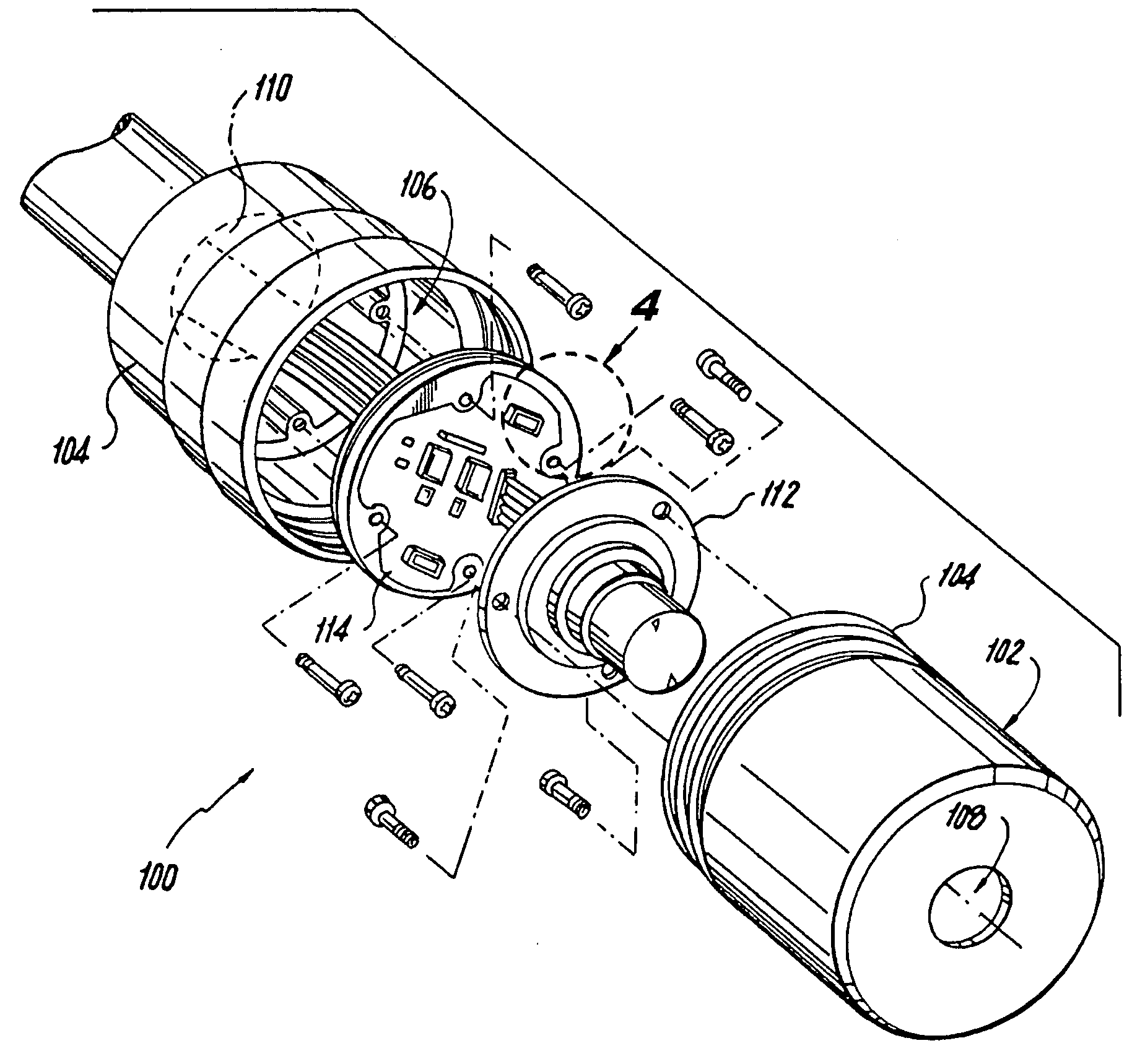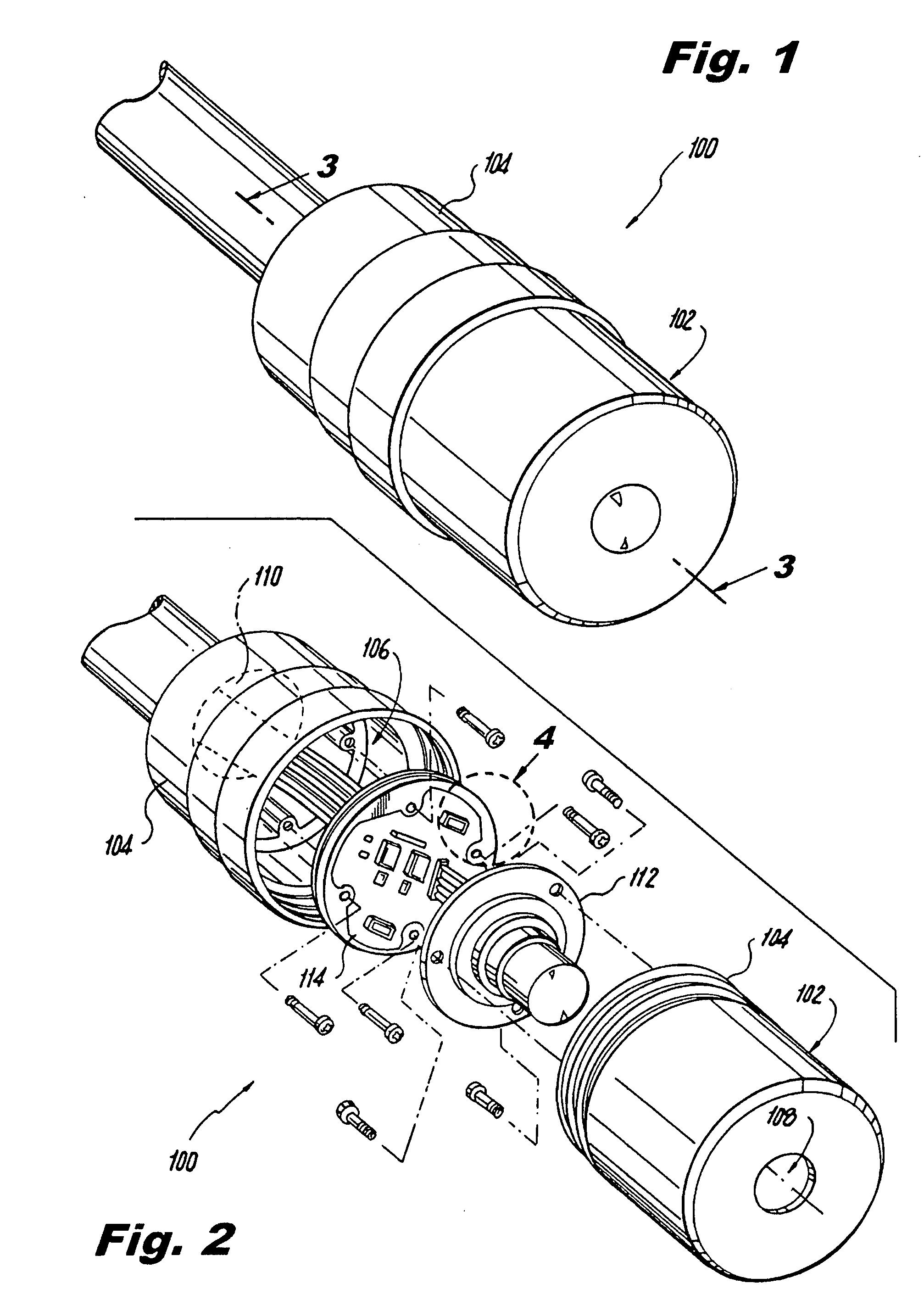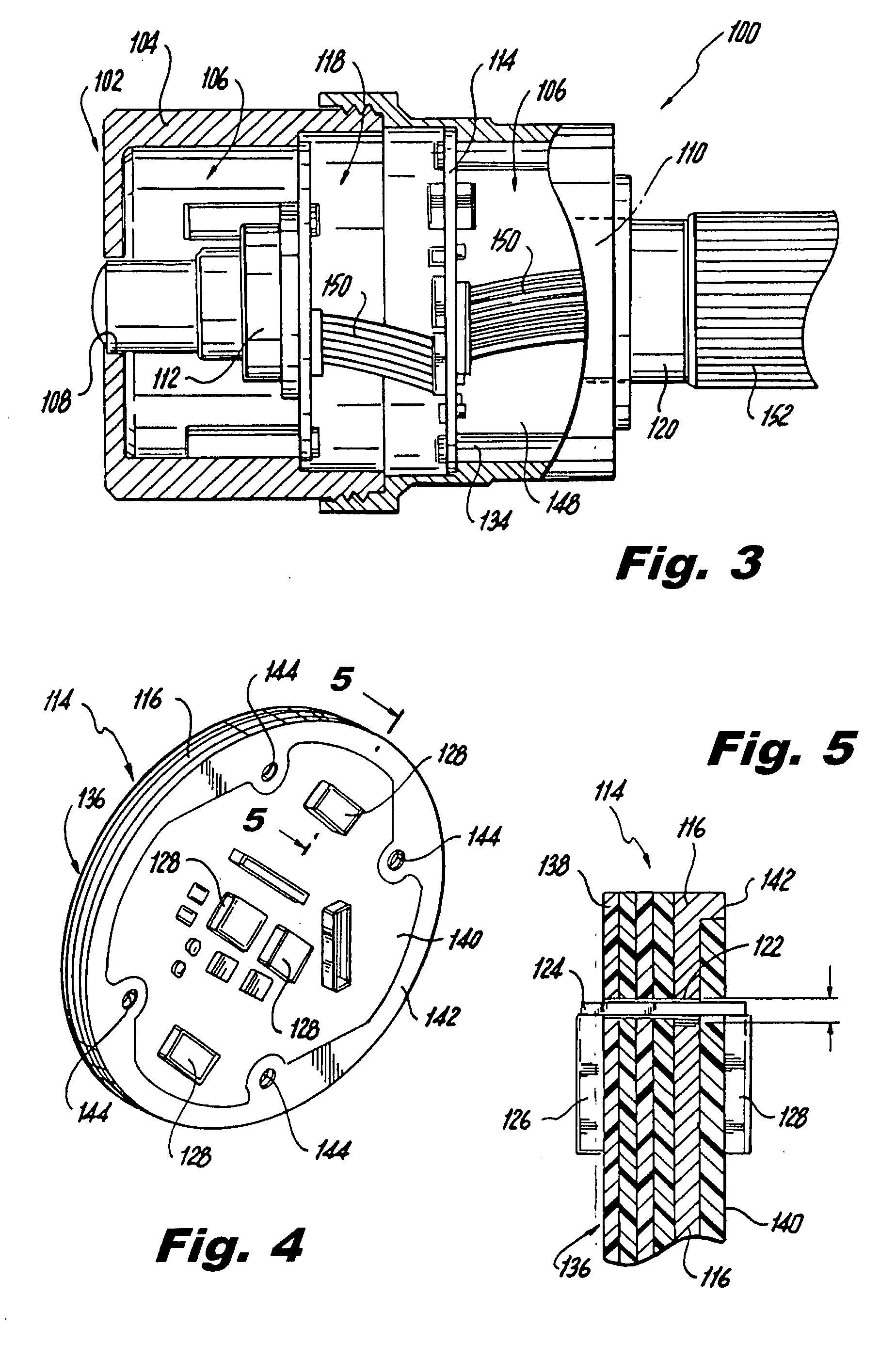Faraday cage for camera
a faraday cage and camera technology, applied in the direction of coupling device connection, instruments, television systems, etc., can solve the problems of inability to use a faraday cage in full, limited effectiveness of this technique, and all electronic devices emit unwanted electrical signals, so as to reduce the transmission of unwanted radio frequency emissions
- Summary
- Abstract
- Description
- Claims
- Application Information
AI Technical Summary
Benefits of technology
Problems solved by technology
Method used
Image
Examples
Embodiment Construction
[0028]Reference will now be made to the drawings wherein like reference numerals identify similar structural features or aspects of the subject invention. For purposes of explanation and illustration, and not limitation, a partial view of an exemplary embodiment of a camera in accordance with the invention is shown in FIG. 1 and is designated generally by reference character 100. Other embodiments of cameras in accordance with the invention, or aspects thereof, are provided in FIGS. 2-10, as will be described. The devices and methods of the invention can be used to improve the EMI performance of cameras in EMI sensitive environments such as onboard aircraft, or in any other suitable application.
[0029]As shown in FIG. 1, camera 100 has an electrically conductive housing 102 defined by exterior walls 104 made of aluminum, or any other suitable material. FIG. 2 shows camera 100 in an exploded view to reveal interior cavity 106 within exterior walls 104. A lens opening 108 is provided t...
PUM
 Login to View More
Login to View More Abstract
Description
Claims
Application Information
 Login to View More
Login to View More - R&D
- Intellectual Property
- Life Sciences
- Materials
- Tech Scout
- Unparalleled Data Quality
- Higher Quality Content
- 60% Fewer Hallucinations
Browse by: Latest US Patents, China's latest patents, Technical Efficacy Thesaurus, Application Domain, Technology Topic, Popular Technical Reports.
© 2025 PatSnap. All rights reserved.Legal|Privacy policy|Modern Slavery Act Transparency Statement|Sitemap|About US| Contact US: help@patsnap.com



